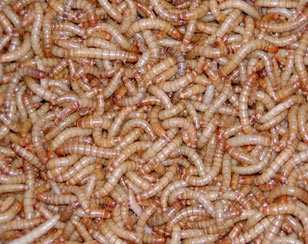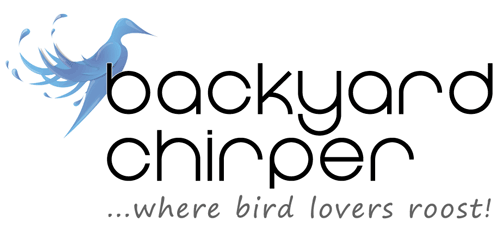Although bird seed is by far the most popular method of feeding birds, it's also not the only option. If you want to attract a variety of birds, you'll have to expand to food like suet, berries, dog food and mealworms. For many people, raising or buying mealworms is a gross way to attract birds, but it's also among the most rewarding. Since attracting birds with mealworms takes a bit more thought and knowledge than buying a regular bird feeder and filling it with seed, here are some tips and tricks for attracting birds with mealworms.

About mealworms
Mealworms are the small larvae of beetles called darkling beetles. Typical mealworms are tan, grow about 2.5 cm long and stay in the larvae stage between 12 and 54 days. Although they aren't slimy, many people hate handling them because they're very wriggly.
What birds eat mealworms
Mealworms are actually ingested by many animals, including reptiles, fish, birds and even humans. Bluebirds are best known for eating mealworms, but titmice, wrens, robins, woodpeckers, chickadees, cardinals and nuthatches also eat them. Birds eat mealworms the most during summer while raising their nestlings because mealworms provide nutrients. Mealworms should be eaten in moderation because despite being a good source of protein, they're harder for young bird to digest.
Attracting birds with mealworms
Step 1: Get a bird feeder that holds mealworms
Regular house feeders or tube feeders won't dispense mealworms, so you have to get a bluebird or platform feeder. The ideal feeder should either have a platform so birds could perch to eat or a hole where birds could enter a fixed enclosure containing the mealworms. If you're feeding bluebirds, place the feeder near a bluebird house.
Step 2: Buy or raise mealworms
After you have the feeder, it's time to fill it with mealworms. The quickest and easiest option is to buy dried mealworms in a pouch. The alternative to dried mealworms are those from cans because they're softer, wetter and closer to their living state.
If you're planning on feeding bluebirds, they refuse to eat dead mealworms and know the difference in color, movement and texture. Most sporting stores or bait shops sell live mealworms for cheap. After you buy mealworms, store them in the refrigerator because this makes them dormant and keeps them alive for several months. If you're interested in raising mealworms yourself, this YouTube video is a great resource.
Step 3: Put mealworms in the feeder and on the ground
A good serving size for birds is about 100 mealworms once or twice a day. Place mealworms in the feeder, but also scatter some around on the ground beneath the feeder. This will catch a bird's attention and draw it to the mealworms in the feeder.
Step 4: Be consistent with times and procedure
You have to train bluebirds to go to your feeder by having a daily procedure. For example, place the mealworms at a specific time each day (preferably in midday) and use a bell or whistle to announce it. Eventually, birds will be flocking to your yard every day for a healthy dose of mealworms.

